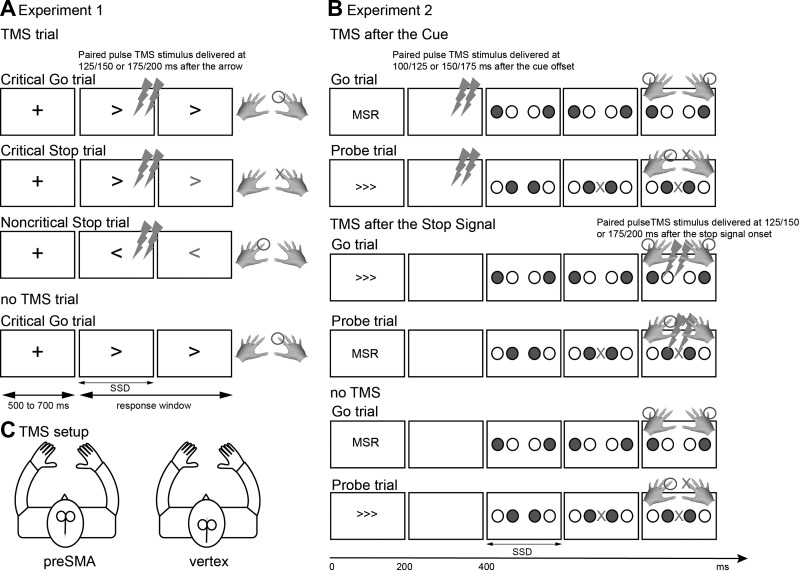Fig. 1.
Tasks for experiments 1 and 2. A: experiment 1: conditional stop signal task. A leftward or rightward pointing arrow (go signal) was presented. Participants made quick button presses using either the left or right index finger. Occasionally (30%), the arrow turned to red (stop signal), here shown in gray. Participants tried to withhold the response only if the arrow pointed in the critical direction (e.g., right) and continue the response if the arrow pointed in the noncritical direction (e.g., left). Dual-pulse transcranial magnetic stimulation (TMS) was given at 125/150 or 175/200 ms after the onset of the go signal on half of the trials but not on the others. B: experiment 2, selective stopping task. Each trial began with a cue (“MSL,” “<<<,” “MSR,” or “>>>,” indicating maybe stop the left or right hand). The cue was presented for 200 ms, followed by a blank screen for 200 ms. Subsequently, two blue circles (go signal) and two white circles were presented. Participants made quick bimanual button press with either index or little fingers of both hands. Occasionally (30%), a red “X” (stop signal) was presented shortly after the go signal. Participants tried to withhold the response on the cued hand (e.g., the right hand for “MSR” or “>>>” cues) and to continue the response with the other. Dual-pulse TMS stimulation was given at 100/125 or 150/175 ms after the cue offset on one third of trials, or at 125/150 or 175/200 ms after the onset of the stop signal on another one third of trials. C: a batwing coil was placed over either the right preSMA or the vertex with the handle pointing posteriorly.

